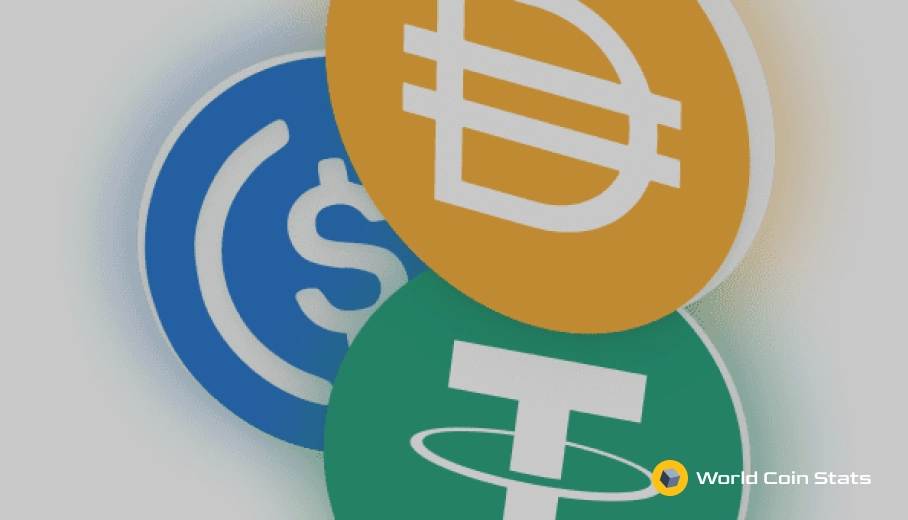The Last Bitcoin Cycle
Bitcoin operates in cycles based on something called halvings. Basically, halvings are when the mining reward is cut in half. This occurs every 210,000 blocks, which works out to about every four years.
Anyway, there has been much speculation that this halving cycle, it started with the last halving in May 2020, is the last halving cycle. Not because Bitcoin will stop halving, but the price increases that follow a Bitcoin halving will no longer occur.
We find that argument a little pessimistic not to mention it breaks a basic law of economics:
The price of a commodity increases if supply decreases and demand increases (or stays steady).
This article will present an argument why this is most likely not Bitcoin’s last cycle. We will also prevent an argument why this could be Bitcoin’s last cycle, but we find that argument much less convincing.
Contents
Why This Isn’t Bitcoin’s Last Cycle
As mentioned previously, Bitcoin has a built-in supply mechanism that halves the new supply every four years.
This was implemented to ensure that the cryptocurrency would increase in value over time. It is also used as an anti-inflationary measure.
Again, the only thing that must occur for the price of Bitcoin to rise is demand for Bitcoin remaining constant. This, of course, begs the question:
Will the demand for Bitcoin remain steady in the future?
Obviously, no one knows the future, but based on the past success of Bitcoin it does appear that this is not the last Bitcoin cycle.
To further this point, big corporations are just starting to get into this Bitcoin. That had never been a thing in the past.
Sure, some corporations accepted Bitcoin as payment, but they did not actively hold it.
Things are different this time. Corporations are now adding Bitcoin to their balance sheet. This trend looks like it will continue until every corporation holds some Bitcoin.
Corporations holding Bitcoin is huge because it means one thing – demand for Bitcoin will increase as these institutions have a lot of cash to throw around. This makes the future of Bitcoin a lot brighter.
Just imagine what will happen to the price during the next halving.
Big institutions already hold billions of dollars worth of Bitcoin. Combine that with the fact that the new supply of Bitcoin will be cut in half and you have a recipe for a massive increase in the price of the cryptocurrency.
All in all, the price of Bitcoin is not going anywhere but up in the long term future.
Does that mean Bitcoin will not crash?
No, Bitcoin will probably crash at some point in the next one to three years.
All we’re saying is that you should watch out for the next halving cycle – that could see Bitcoin’s price hit $1 million.
Why This Might Be Bitcoin’s Last Cycle
On the flipside, many so-called experts have deemed that this is Bitcoin’s last cycle. Those same so-called experts said that in 2017. They were about that until 2021 when Bitcoin tripled it’s previous all-time high.
With that in mind, these experts have done a terrible job at predicting the price of Bitcoin, so you can take their predictions with a grain of salt.
In fact, most of these so-called experts do not seem to understand the halving mechanics of Bitcoin. They simply see a large price increase and reflexively cry out “bubble” without doing any actual research.
With all that out of the way, this could be Bitcoin’s last cycle. But not because Bitcoin never reaches this price point again.
This could be the last big cycle because historical trends have shown that Bitcoin has increasingly smaller bull runs as the price increases. In fact, the all-time high caused by a halving is typically about half the increase from the last all-time high.
For example, Bitcoin’s all-time high during the 2017 cycle was about $19,500. The high before that was $1,000 and the all-time high before $1,000 was $30.
That is a 3,300% increase and then a 2,000% increase.
This is why many believe that this next Bitcoin bull run will top out around $200,000, which would be about a 900% increase in the price.
From there, we could assume the next cycle will be around 450% and then 225% and so on until the increases become negligible.
That theory is not unreasonable to assume.
However, it does have one pretty big wrinkle in it.
Institutional investors are driving the current Bitcoin cycle and will likely drive future Bitcoin cycles. These institutional investors have much more money and much stronger hands than retail investors.
With that point out of the way, we find it improbable that this will be Bitcoin’s last cycle. Could it be Bitcoin’s last major cycle?
Yes, that seems likely. The next pullback will likely be much smaller than previous pullbacks. Consequently, the next bull run will likely be smaller than previous bull runs, but that does not change the fact that these bull runs will still happen in the future.
Can Bitcoin Go To $0?
Finally, another common sentiment amongst Bitcoin bears is that Bitcoin will go to $0 in the future.
This used to be much more common prior to 2017, but the sentiment has subsided as the price of Bitcoin has only gone up on a long enough timeline.
The main premise of this argument is that Bitcoin has no inherent value, which we find an odd argument. Bitcoin has tremendous value as a store of value – it’s similar to gold in that gold is primarily used as a store of value.
Sure, gold has some industrial uses, but the vast majority of gold is used to store value and not for industrial uses.
This is why Bitcoin was called “digital gold” for such a long time and many still refer to it as digital gold.
Final Thoughts
Well, that about covers it for the theory that this is the last Bitcoin cycle – it’s not. We admit that it probably will not be the last Bitcoin cycle. In fact, the nature of Bitcoin with halving the supply every 210,000 blocks makes it likely that Bitcoin will always operate in some sort of boom/bust cycle.
Quite frankly, you can pretty much ignore any bearish sentiments from so-called experts like Peter Schiff. They have been wrong about Bitcoin since the inception of Bitcoin, so it seems unlikely their predictions will ever come true.
Again, we are not saying that Bitcoin will always increase in price – there will be increases and decreases, but the long-term future will remain positive.




